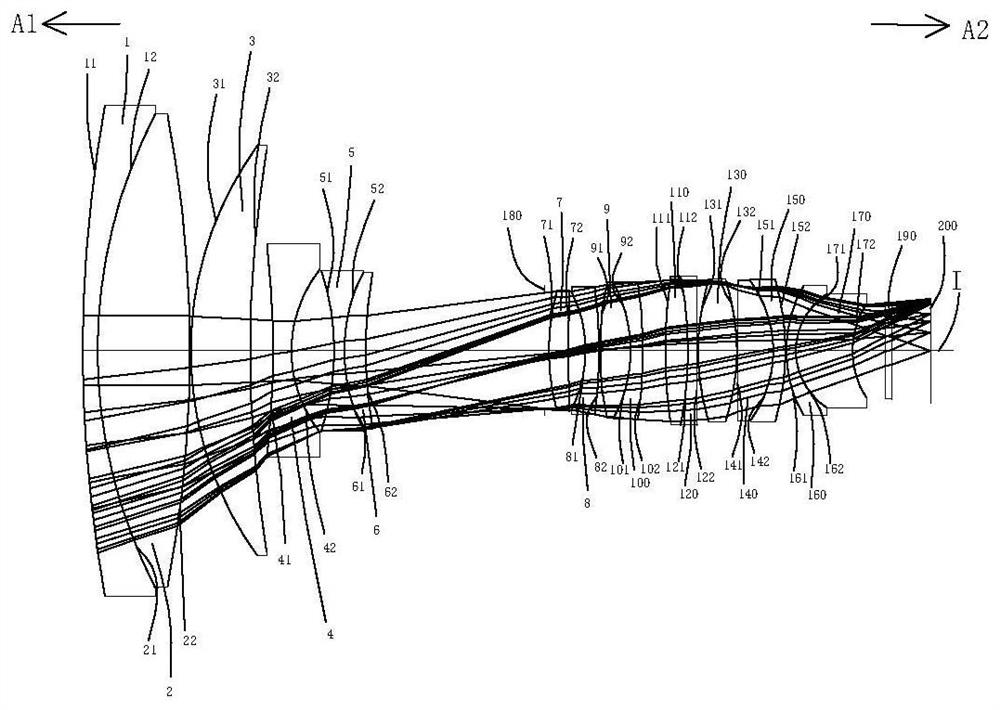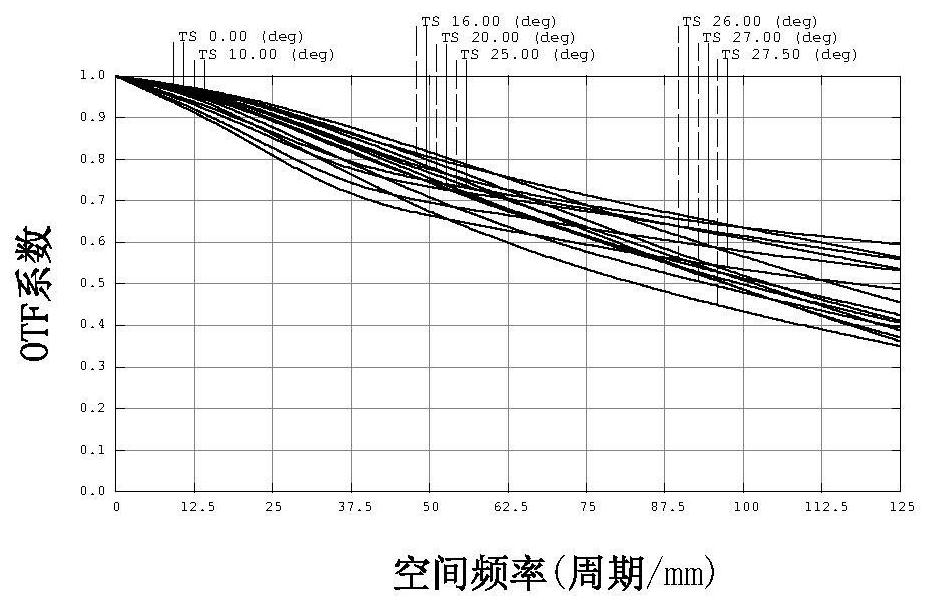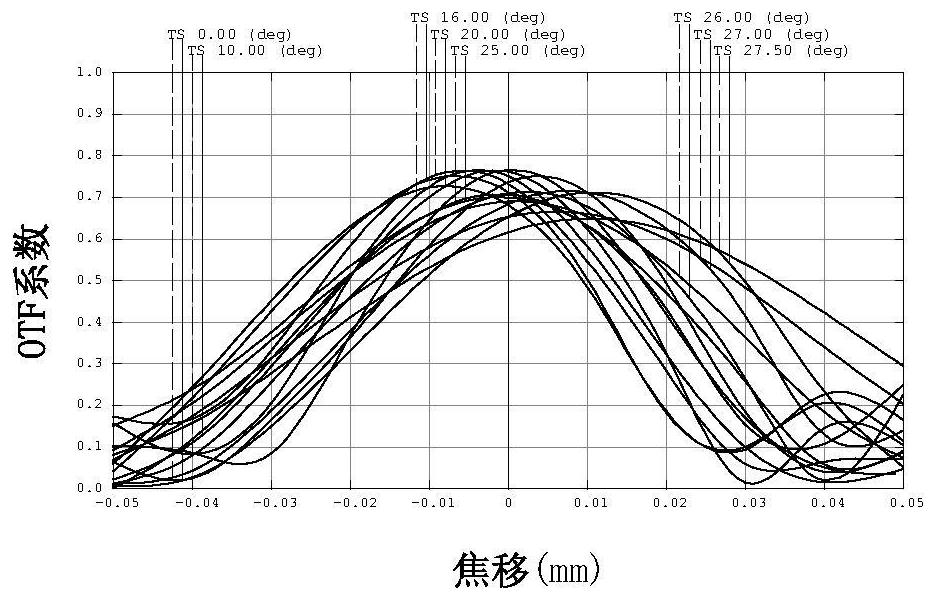Infrared confocal zoom lens
A zoom lens and infrared confocal technology, applied in the field of infrared confocal zoom lenses, can solve the problems of blue-violet fringing, low relative illumination at the edge of the imaging surface, and small image surface, and achieve uniform relative illumination at the edge of the image surface and good images. Good color reproduction and infrared confocal performance
- Summary
- Abstract
- Description
- Claims
- Application Information
AI Technical Summary
Problems solved by technology
Method used
Image
Examples
Embodiment 1
[0112] Such as figure 1 with 9 As shown, an infrared confocal zoom lens includes a first lens 1, a second lens 2, a third lens 3, a fourth lens 4, and a fifth lens in sequence along an optical axis I from the object side A1 to the image side A2 5. The sixth lens 6, the aperture 180, the seventh lens 7, the eighth lens 8, the ninth lens 9, the tenth lens 100, the eleventh lens 110, the twelfth lens 120, the thirteenth lens 130, the thirteenth lens The fourteenth lens 140, the fifteenth lens 150, the sixteenth lens 160, the seventeenth lens 170, the cover glass 190 and the imaging surface 220; the first lens 1 to the eleventh lens 110 each include a lens facing the object side A1 and An object side through which the imaging light passes and an image side facing the image side A2 through which the imaging light passes.
[0113] The first lens 1 has a negative refractive power, the object side 11 of the first lens 1 is a convex surface, and the image side 12 of the first lens 1 ...
Embodiment 2
[0138] Such as Figure 15 with 23 As can be seen, the concave-convex surface and refractive index of each lens in this embodiment and the first embodiment are the same, and only the optical parameters such as the radius of curvature of the lens surface and the thickness of the lens are different.
[0139] The detailed optical data of this specific embodiment at the shortest focal length (wide-angle) is shown in Table 2-1.
[0140] Detailed optical data at the shortest focal length of the second embodiment of Table 2-1
[0141]
[0142] The detailed optical data at the longest focal length (telephoto) of this specific embodiment is shown in Table 2-2.
[0143] Detailed optical data at the longest focal length of Table 2-2 Example 2
[0144]
[0145]
[0146] Please refer to the following table for the detailed data of the parameters of each aspheric surface in this specific embodiment:
[0147] surface 131 132 K= -4.0281E+00 4.6242E+00 a 4 =
...
Embodiment 3
[0152] Such as Figure 29 with 37 As can be seen, the concave-convex surface and refractive index of each lens in this embodiment and the first embodiment are the same, and only the optical parameters such as the radius of curvature of the lens surface and the thickness of the lens are different.
[0153] The detailed optical data of this specific embodiment at the shortest focal length (wide-angle) is shown in Table 3-1.
[0154] Detailed optical data at the shortest focal length of the third embodiment of Table 3-1
[0155]
[0156] The detailed optical data at the longest focal length (telephoto) of this specific embodiment is shown in Table 3-2.
[0157] Detailed optical data at the longest focal length of Table 3-2 Example 3
[0158]
[0159] Please refer to the following table for the detailed data of the parameters of each aspheric surface in this specific embodiment:
[0160] surface 131 132 K= -4.0281E+00 4.6242E+00 a 4 =
-9.2271E-07...
PUM
 Login to View More
Login to View More Abstract
Description
Claims
Application Information
 Login to View More
Login to View More - R&D
- Intellectual Property
- Life Sciences
- Materials
- Tech Scout
- Unparalleled Data Quality
- Higher Quality Content
- 60% Fewer Hallucinations
Browse by: Latest US Patents, China's latest patents, Technical Efficacy Thesaurus, Application Domain, Technology Topic, Popular Technical Reports.
© 2025 PatSnap. All rights reserved.Legal|Privacy policy|Modern Slavery Act Transparency Statement|Sitemap|About US| Contact US: help@patsnap.com



